I made it out for about 90 minutes at a street project last night before dusk and into the dark and made some great finds, including this solid and sweet 33-34 on the Nox. I pulled out a large grey disc and I knew I had a coin and suspected it was a half. When I got back to the car I could see the seated liberty design and was blown away. Earlier this year I found two 1876 seated dimes at this same spot on the other side of the street, now I just need to find the quarter  Unfortunately, the half being under a sidewalk for the past 125+ years, was not kind to it and it is very pitted and a bit toasted on the back, but I'm not complaining one bit.
Unfortunately, the half being under a sidewalk for the past 125+ years, was not kind to it and it is very pitted and a bit toasted on the back, but I'm not complaining one bit.
Other finds included 1901 and 1905 V Nickels, three IH's, a Merc, a Wash Q and quite a few wheat cents. And yes, that is the top to an empty coin purse clasp with bits of leather still inside.
This definitely made, what has been an awesome year of MDing, even better!
Thanks for looking!
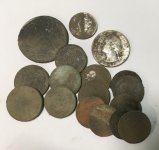
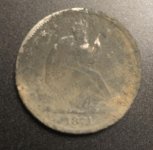

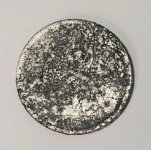
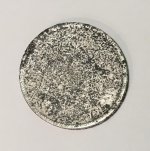
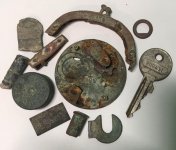
 Unfortunately, the half being under a sidewalk for the past 125+ years, was not kind to it and it is very pitted and a bit toasted on the back, but I'm not complaining one bit.
Unfortunately, the half being under a sidewalk for the past 125+ years, was not kind to it and it is very pitted and a bit toasted on the back, but I'm not complaining one bit.Other finds included 1901 and 1905 V Nickels, three IH's, a Merc, a Wash Q and quite a few wheat cents. And yes, that is the top to an empty coin purse clasp with bits of leather still inside.
This definitely made, what has been an awesome year of MDing, even better!
Thanks for looking!







